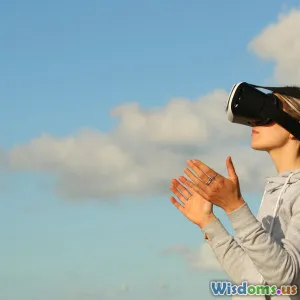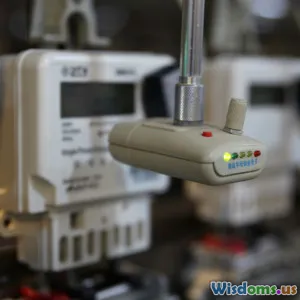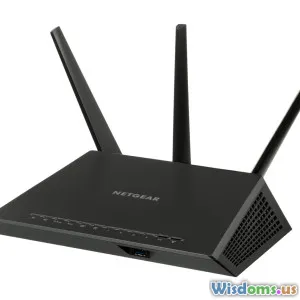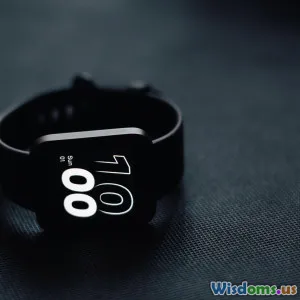
Top 7 Emerging Trends Shaping Wearable Tech in the Next Decade
13 min read Explore the transformative trends that will define wearable technology over the next decade, from health innovations to advanced smart accessories. (0 Reviews)
Top 7 Emerging Trends Shaping Wearable Tech in the Next Decade
Wearable technology is evolving at an exhilarating pace. From ubiquitous smartwatches tracking our steps to innovations promising enhanced health, productivity, and convenience, the next ten years are poised to redefine how wearables mold our daily experiences. In this article, we unpack seven emerging trends driving wearable tech into its transformative future, supported by cool examples, sharp analysis, and forward-thinking insights.
Smart Fabrics: The Seamless Blend of Tech and Textiles

Imagine a world where your running shirt not only wicks sweat, but also measures muscle exertion, monitors hydration, and adjusts its insulation in real-time. This isn't science fiction—it's the promise of smart fabrics, also called e-textiles. Companies like Google (with its Project Jacquard) have already blended conductive fibers into everyday apparel, enabling jackets that let you answer calls or control music with a swipe on your sleeve.
At the intersection of fashion and function, smart fabrics are attracting major investment. Textile behemoth Levi Strauss & Co. collaborated with Google to release a connected jean jacket, while startups like Hexoskin deliver sensor-laden shirts for health monitoring. The U.S. Army is trialing uniforms with embedded sensors that monitor troop vitals.
How-to insight: Adoption in sports, healthcare, and military contexts is only the beginning. The next decade will likely see:
- Self-cleaning fabrics that use embedded nanotechnology
- Integrated solar fibers for on-the-go device charging
- Responsive clothing that adapts its temperature based on body needs
For businesses targeting the wearable sector, cross-industry partnerships between tech giants and textile manufacturers are a recommended entry point, capitalizing on both wearable functionality and garment comfort.
Health and Bio-Monitoring 2.0: Beyond Steps and Heartbeats
Most current wearables offer fitness tracking, sleep monitoring, and heart-rate measurement. But the next innovation wave dives much deeper. Advances in biosensor miniaturization and non-invasive monitoring will turn wearable devices into sophisticated health assistants.
Apple's rumored non-invasive blood glucose monitoring on the Apple Watch, and Dexcom’s G7 glucose monitor patch, showcase how chronic illness management is evolving. Emerging startups are working on wearables able to:
- Detect dehydration or stress via sweat analysis
- Continuously monitor blood pressure with accuracy comparable to medical devices
- Check for arrhythmias, blood oxygen, and sleep apnea entirely passively
Analysis: In the next decade, the convergence of AI, biosensors, and cloud infrastructure will shift wearables from generic wellness tools to real-time medical monitors. This will catalyze personalized healthcare at an unprecedented scale, reducing diagnostic delays and improving chronic disease management.
Case in point: The Oura Ring now provides data so granular—with resting heart trends, temperature variations, and movement tracking—that it's being used in longitudinal health studies and early illness detection. Future wearables may even predict acute medical episodes, like seizures, in at-risk populations.
Miniaturization and Invisible Wearables

If you think wearables are already small, wait until you see what's next. Miniaturization is ushering in an era of almost invisible technology—devices woven into the fabric of life, unlike the clunky bands of today.
Startups like Motiv created a fitness-tracking smart ring years ago. Now, we're seeing smart adhesive patches the size and thickness of a Band-Aid, packed with powerful biosensors. Engineers are creating chipsets and batteries tunable for micro-devices, with MIT researchers inventing a skin-like, wireless health patch less than a millimeter thick.
Comparison:
- Current wearables: Bulky or obviously digital—wristwatches, headbands, clip-ons
- Emerging mini wearables: Embeddable under the skin or adhered to body surfaces, vanishing from sight yet monitoring more metrics
Electronics miniaturization will open the door to mainstream smart contact lenses. Mojo Vision claims to have built the first prototype contact lens with a discrete display delivering real-time streaming data and enhanced reality overlays directly to the eye.
Actionable advice: The development of bio-compatible, durable materials and energy harvesters are mission-critical for entrepreneurs looking to enter this next-level miniaturization space.
Augmented Reality (AR) Glasses—Next-Generation Human-Computer Interfaces

The promise of seamless digital-physical integration lies with AR glasses. While Google Glass and Snap Spectacles pioneered the space, the next decade is set for a breakthrough, as underlying hurdles—battery life, displays, privacy—are steadily overcome.
Tech behemoths are betting big: Apple’s Vision Pro, Meta’s Ray-Ban Stories, and rumored AR glasses from Samsung and Xiaomi are all scheduled for major improvements. Innovations on the horizon:
- High-resolution heads-up displays backed by faster processors
- Real-time AI-based translation and transcription
- Prescription-compatible, fashionable designs for mainstream adoption
Insider tip: Besides entertainment and social interaction, AR glasses will revolutionize:
- Remote work: Overlaying instructions, checklists, and analytics into the field of view for workers and technicians
- Assistive technology: Helping visually impaired users navigate urban environments with live object identification and hazard warnings
Snap’s partnership with GANNI to release fashion-forward AR glasses exemplifies how utility will mesh with self-expression. By 2034, projections suggest AR eyewear could reach annual sales of $50 billion, rivaling the current smartwatch market.
Wearables in Remote Patient Monitoring and Telemedicine
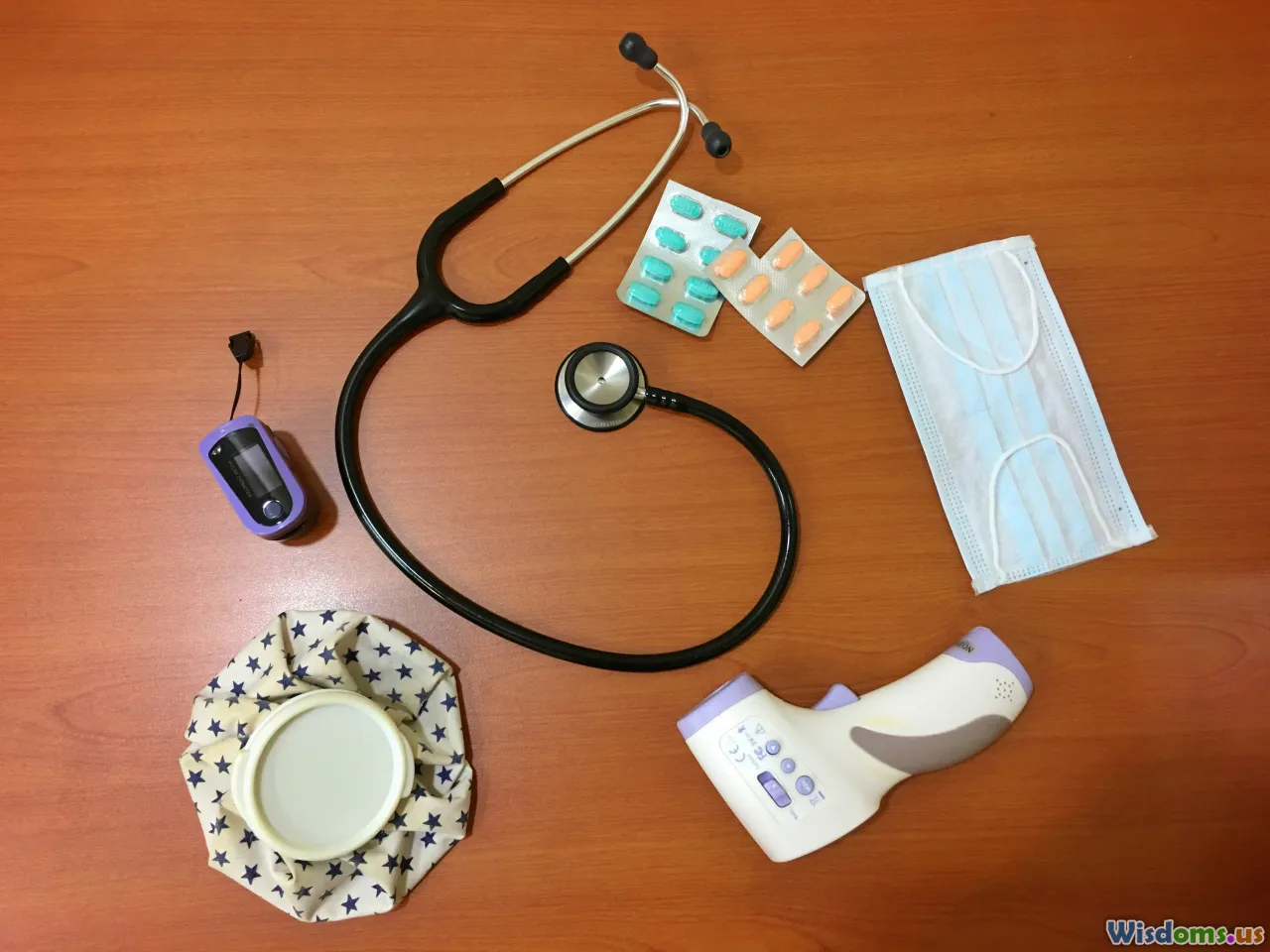
The COVID-19 pandemic dramatically accelerated healthcare’s digital transformation. Wearables are becoming critical tools in telemedicine, directly improving both access and outcomes for patients and providers.
For example, BioIntelliSense’s BioSticker can track respiratory rate, skin temperature, and heart rate, informing remote physicians of early warning signs—all at home. Some key changes anticipated in the next ten years:
- Integration of wearable patient data into telehealth EMR systems
- Remote medication adherence support via physiological feedback
- Wearables prescribed by doctors like pharmaceuticals, reimbursable through insurance in many countries
How-to: To benefit, clinics and providers should prioritize wearable-compatible platforms for scheduling, compliance monitoring, and secure patient data flows. Home-based elderly care will see a special boom, as passive monitoring by wearables lets seniors stay independent longer, reducing hospitalizations.
Brands embracing open standards and privacy controls (like Apple HealthKit and Google Fit) are rapidly gaining physician and patient trust—hinting at interoperability as an industry game-changer.
Advanced Gesture and Emotion Recognition

Controlling devices by tapping, speech, or pressing buttons will soon feel as outdated as rotary phones. Wearables are gaining the ability to interpret gestures, micro-movements, and even emotions.
Facebook Reality Labs has demonstrated prototype neural interfaces that convert subtle wrist signals into digital commands. Google’s Jacquard jacket already lets users answer calls with simple gestures. Meanwhile, smart rings like those from RingConn can measure galvanic skin response to detect emotional stress.
Analysis: Improved machine learning and sensor arrays enable wearables to develop a contextual understanding of users:
- Detecting whether you’re stressed, calm, or fatigued through biometrics
- Translating hand gestures into text input, smart home control, or navigation commands
- Enabling haptic and tactile feedback directly on skin or via connected devices
Privacy perspective: As these devices process more personal, behavioral, and emotional data, transparent user consent and ethical data governance will be crucial. Savvy manufacturers are already hiring in-house privacy officers and collaborating with policy organizations to establish industry benchmarks before regulations tighten.
Wearables as Payments, Keys, and Identity: Beyond Fitness and Fashion

Contactless payments via phone or wristwatch? That's just the start. The next decade will see wearables assume the role of keys, IDs, and authentication tokens—turning consumers' bodies into secure access platforms.
The NFC Ring has allowed users to unlock doors and transmit information since 2016, while Fitbit Pay and Apple Pay already process millions of tap-to-pay purchases. MasterCard and Visa are publishing developer kits for secure wearable payments, leading the way for non-watch, non-phone form factors. Expect:
- Smart rings and bracelets that replace office keycards, transit passes, and car keys
- Multi-factor authentication based on biometrics and physiological signals (e.g., heart rhythm)
- Ultra-secure, tokenized login systems for banking and enterprise platforms
Practical tip: For businesses, integrating their apps and services into wearable-friendly authentication ecosystems will help retain security-savvy customers. For end-users, wearables will mean fewer physical cards or passwords to remember and a vastly improved seamless user experience.
Wearable technology’s next chapter will be defined by its deepening integration into our physical lives, economy, and health systems—often blurring the lines between what is technology, clothing, and even biology. Whether you're an innovator, investor, medical leader, or consumer, staying tuned to these seven emerging trends will ensure you operate at the heart of tomorrow’s most dynamic technology ecosystem.
Rate the Post
User Reviews
Popular Posts












